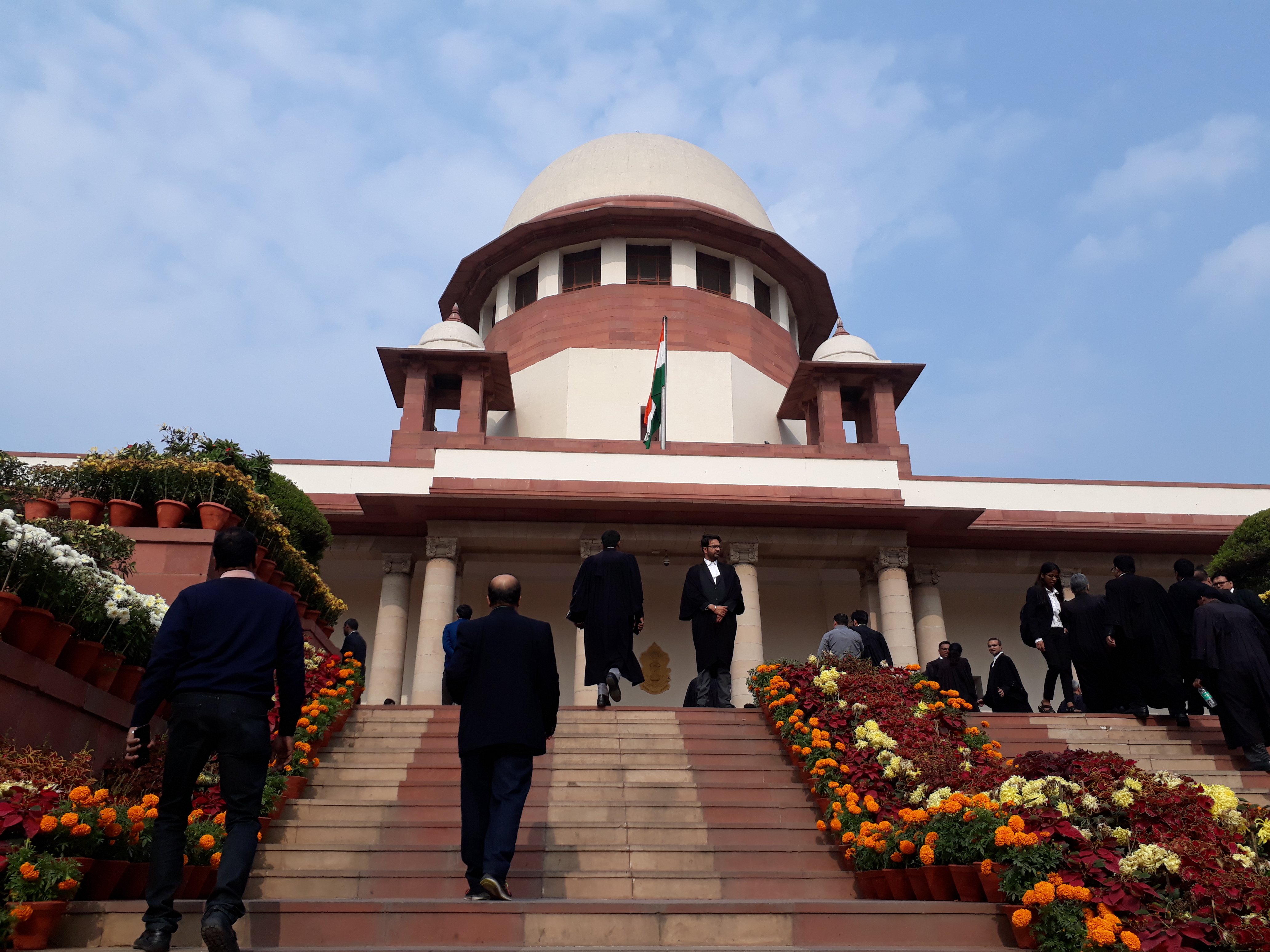Death penalty sentencing in India: The futility of introducing safeguards for an inhuman punishment
Posted:
Time to read:
In the last four years, the Supreme Court of India’s attempts to reform sentencing practices in capital cases has been at the forefront of death penalty discourse in India. Recognising that death sentences were imposed in the absence of any information about the accused’s life and conduct, the Supreme Court, in Manoj v. State of Madhya Pradesh (2022) directed trial courts to collect information about their life to assess mitigating circumstances and amenability to reform.[1] Three years after the decision, Project 39A’s latest Death Penalty in India: Annual Statistics Report 2024 revealed that trial courts had complied with the Supreme Court’s directions for capital sentencing in just 7% of death penalty cases since the decision.
Such data is an indictment of the trial courts, which have stubbornly failed to comply with Supreme Court directions. However, as this post will demonstrate, these failures must be located in the Supreme Court’s exercise of issuing directions to fix capital sentencing, which is decontextualised. The directions fail to a) recognise the larger sentencing system in India within which its directions are located; and b) are characteristic of the Court’s ‘safeguards’ which attempt to legitimise the death penalty, even as they fail to undercut its dehumanising reality. This post argues that the Court’s attempts towards reform are not only a bright line and hollow procedural requirement, but also come with the danger of exceptionalising standard procedures for fairness at sentencing across all punishments.
Safeguards for the death penalty - a never-ending exercise?
Over the last 25 years, India - a retentionist country - has executed eight people, despite imposing over 3000 death sentences in this time frame. Death penalty data reveals that while trial courts impose an average of 139 death sentences per year, the High Courts and the Supreme Court of India have consistently overturned them in all but 4.9% sentences, as per the Death Penalty India Report (2016). These trends - high death sentence imposition at trial courts coupled with low confirmations at appellate stages - have existed since 2000, even before a number of death penalty safeguards were introduced by the Supreme Court.
The past decade saw notable developments from the Supreme Court in the creation of safeguards for the judicial administration of the death penalty. These include mandatory hearings of death sentence review petitions in open court at the Supreme Court,[2] widened power of commutations for appellate courts after the executive had rejected a mercy petition[3] and carving out life without release sentences for commutations[4] as an alternative to capital punishment. With Manoj, the Court attempted to infuse sentencing safeguards in capital cases at the trial court stage.
Despite multiple safeguards, the imposition of death sentences continues on a large scale, subjecting hundreds to the horrors of death row. Indian trial courts have routinely imposed death sentences on people with disabilities and mental illnesses. Capital sentences are also disproportionately imposed on people hailing from caste and religious minorities. The large majority of capital sentences are imposed based on the nature and seriousness of offences alone, without any information available about the accused person. In aggregate, India’s death penalty problem must be understood not through the number of executions - but through the number of people who are unfairly subjected to death row conditions in prisons, and the prolonged duration in which they live under a death sentence. This includes facing additional stigmatisation, a higher risk of mental illnesses as compared to other prisoners, barriers to work and recreation and solitary confinement. Further, the average duration of time spent on death row is five years.
In 2024, the death penalty problem in India continued to grow, with the death row population reaching 564 prisoners at the end of the year - the highest ever since the turn of the century.

The Supreme Court’s attempt to reform capital sentencing
Several commentators, including past Supreme Court judges, have taken pride in the Supreme Court’s attempts to weave in exceptional safeguards, which restrict the death penalty and executions.
In the latest slew of safeguards that it developed, the Supreme Court started to take note of the absence of information pertaining to a person sentenced to death, and began calling for mitigation and prison conduct reports in death penalty appeals. This practice culminated in the 2022 decision in Manoj, with the Court directing the State to produce prison conduct and psychiatric evaluation reports, and obliging trial courts to gather more information about the person’s life history. In September 2022, the Supreme Court also referred the question of setting standards for a fair death sentencing process to a five-judge bench (Constitution bench).[5] A bench which can decide this matter remains to be assembled.
The idea of introducing some safeguards at a trial court level was geared towards restricting death sentences at the stage of imposition. However, these directions were made by a three-judge bench of the Supreme Court. Given the polyvocal nature of the Supreme Court, which sits in multiple three-judge benches while deciding death cases (as opposed to sitting en banc), the decision in Manoj is far from having a firm footing as established law. Within a month of the decision in Manoj, another three-judge bench of the Court denied requests for mental health evaluation reports for the accused,[6] demonstrating contrasting directions taken by the Court in capital sentencing processes.
More importantly, these directions were made in a legal system that is unprepared for compliance, given that there is no law in India for the sentencing process. Uncertain footing in law, and the system’s inability to conduct sentencing properly, means that trial courts continue to struggle with compliance with Manoj. In 2024, trial courts partially complied with the directions in four out of 66 cases, seeking prison conduct reports alone. Only six cases saw complete compliance, where prison conduct, life history and mental health reports were elicited and cited in the reasons. Further, trial courts continue to struggle with even providing coherent and legally tenable sentencing reasons in capital cases, let alone undertaking a more sophisticated exercise.
Systemic issues at sentencing
Sentencing is governed only by sparse provisions which provide judges with discretion to select between different kinds and degrees of punishment. Existing requirements include a barebones mandate to ‘hear the accused’, and to provide reasons for the sentence. For death sentences, courts are required to provide special reasons, which was later interpreted by the Supreme Court in 1980 through broad guidelines that have since been criticised for their vagueness and lack of clearcut directions.
Public committee reports have repeatedly criticised the absence of a sentencing policy and emphasised the need for one. However, the discourse generated by these reports does not address fair trial standards at sentencing. The discussion focuses on alternative sentences, penological goals and reduced judicial discretion at sentencing. These recommendations have done little to describe what a fair sentencing process looks like, and do nothing to identify the accused’s rights and relationship to this process.
Fair trials at sentencing is at a nascent stage in India, given the lack of legal imagination. The only place where this issue has been raised is in death penalty cases at the Supreme Court. Fair trials at capital sentencing became a focal point given the exceptional reasons required to justify death, as opposed to a systemic concern for fair trials across sentencing. By limiting this discussion to capital cases, the Court risks approaching fair sentencing processes (which must apply across different punishments) as exceptional and limited to death cases. In other words, setting any standard for fair trial at capital sentencing can become exceptional in the Indian context.
Evidence from Project 39A’s 2024 report demonstrates how the Supreme Court is unable to conceptualise a fair standard for sentencing outside the death context. Thus, in death sentence commutations, the Court has increasingly imposed life without parole (LWOP) sentences over life sentences with the possibility of release, often without any reasons whatsoever.
Conclusion
The absence of discourse and robust law for a fair trial at sentencing means that the Supreme Court’s attempts to reform death sentencing do nothing to change the status quo of death penalty. This is best demonstrated through the unabated growth of death row populations in each calendar year, and the persisting failures of trial courts in meeting even bright line procedural standards under Manoj. This process is yet another ‘exceptional’ safeguard introduced by the Supreme Court for death penalty cases, in an attempt to reconcile the death penalty with fairness.
Evidence demonstrating the systemic failures of the Supreme Court’s directions questions its tendency to undertake a never-ending exercise of devising ‘safeguards’ for the death penalty. If there exists a meaningful commitment towards changing the inhumane realities of India’s death penalty, the Court must question its retention, as opposed to creating newer processes that can sanitise this punishment. The Court will next have the opportunity to revisit this question when the Constitution bench is convened. Given its past record on the death penalty, it appears that the Court is more interested in legitimising the death penalty through newer process, as opposed to confronting the cruel realities that follow with the retention of the death sentence. A Supreme Court which is committed to life and dignity, however, can no longer turn its head away from the overwhelming evidence demonstrating the unacceptable reality of capital punishment.
 |
Lakshmi Menon is an Associate at The Square Circle Clinic at NALSAR University of Law (formerly Project 39A at the National Law University, Delhi), and author of Project 39A’s Death Penalty in India: Annual Statistics Report 2024. |
[1] Manoj v. State of Madhya Pradesh [2023] 2 SCC 353.
[2] Mohd. Arif @ Ashfaq v. The Registrar, Supreme Court of India and Ors. [2014] 9 SCC 737.
[3] Shatrughan Chauhan and Anr. v. Union of India [2014] 3 SCC 1.
[4] Union of India v. V Sriharan @ Murugan and Ors. [2016] 7 SCC 1.
[5] In Re: Framing Guidelines Regarding Potential Mitigating Circumstances to be Considered While Imposing Death Sentences Suo Motu Writ Petition (Crl) 1 of 2022, Order of 19 September 2022 (Supreme Court of India).
[6] Manoj Pratap Singh v. State of Rajasthan [2022] 9 SCC 81.
Share:
